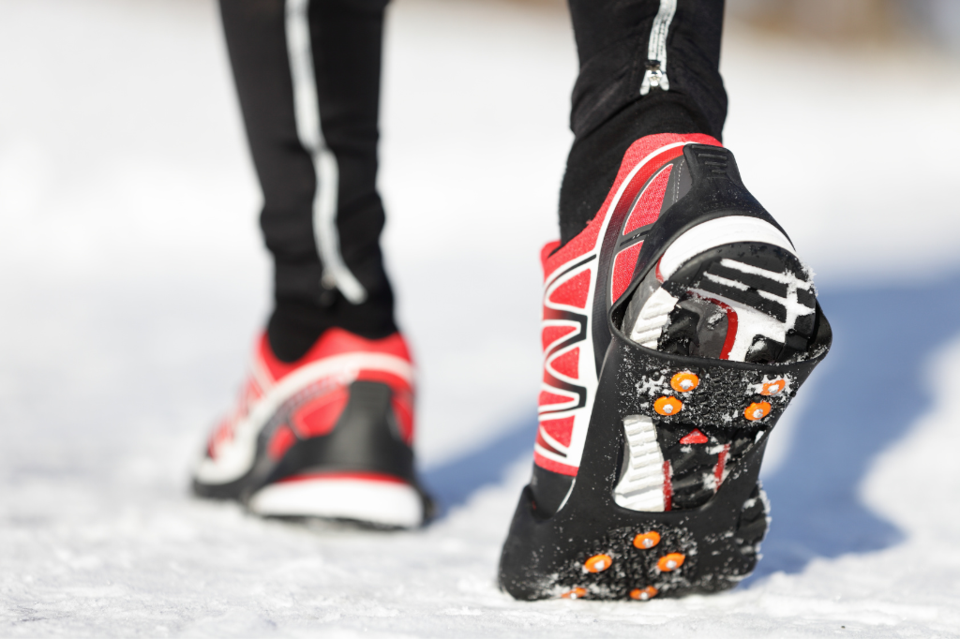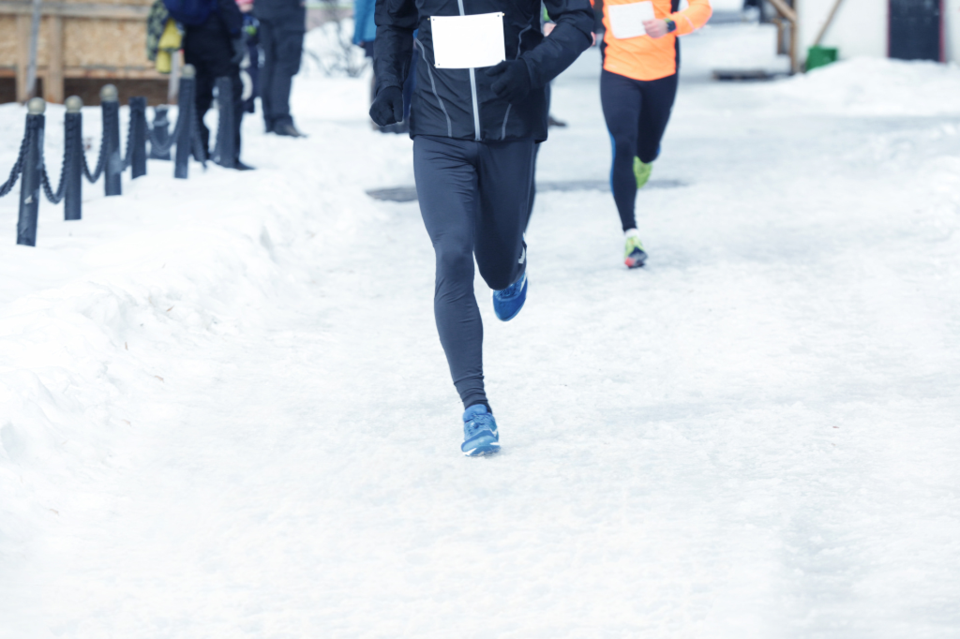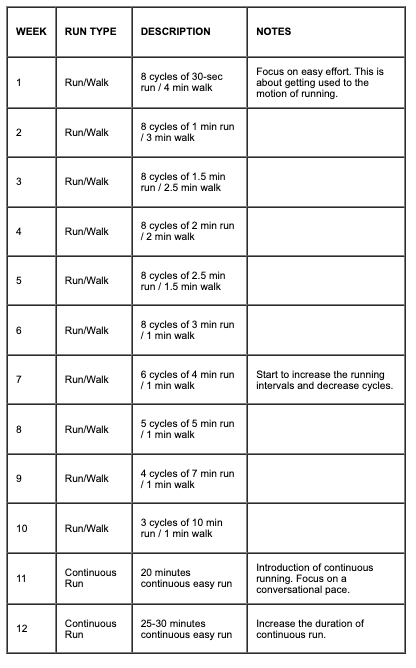January might seem daunting to start a running journey, especially in Ontario’s unpredictable weather or snow, ice, and chilly winds.
But with the right mindset, season-appropriate gear, and helpful tips, you might discover that it’s a refreshing and enjoyable time to hit the pavement (or trail).
Here are 10 guidelines to help you get outside and learn to run safely and comfortably!
-
Getting Started: Types of Runs for Beginners
It’s essential to vary your runs to build endurance and keep things interesting when starting out. Here are some beginner-friendly run types:
- Intervals: Alternate between short bursts of running (e.g., 1 minute) and walking (e.g., 2 minutes). This is great for building stamina.
- Steady-state, easy runs: A steady pace that lets you carry on a conversation (aka the “talk test”). Aim for 20-30 minutes to start, but not until later in your program if you’ve never run or are starting up again after a long hiatus. See below for a 12-week beginner training guide or if you’re starting to run again after a long break.
-
Dress for the Weather
Winter running in Ontario requires smart layering. Follow this formula for success:
- Base layer: Moisture-wicking fabric to keep sweat off your skin.
- Middle layer: Insulating fleece or wool to trap heat.
- Outer layer: Windproof and water-resistant jacket for protection.
- Extras: Don’t forget gloves, a hat or headband, and a neck warmer or gaiter to cover your neck and lower face.
3. Shoes: Avoid Slips and Cold, Wet Feet
Invest in running shoes with good grip or trail running shoes for added traction. Waterproof options help keep your feet dry. If slush is unavoidable, double up on moisture-wicking socks. After the run, be sure to dry your feet out adequately, either by placing them over a warm vent or stuffing them with newspaper. For icy conditions, consider adding running traction aids like Yaktrax to your shoes.

4. Where to Run in Winter
- Paved Trails and Parks: Many Ontario cities keep popular paths clear. Check out the Martin Goodman Trail in Toronto or Ottawa’s Rideau Canal pathways.
- Neighbourhood Loops: Familiar areas reduce the risk of getting lost in bad weather. Many popular apps like Strava have previously saved and reviewed running routes you can try in your area.
- Treadmills: If conditions are treacherous, mix outdoor runs with treadmill sessions.
5. Gear: Must-Haves for Winter Running
- Watches: Apple Watch or Garmin can track your distance and pace.
- Apps: Strava and Nike Run Club are fantastic for motivating, tracking, and saving progress.
- Lights: Stay visible with clip-on LEDs or a headlamp for dark mornings or evenings.
6. Running Solo or With a Buddy?
A running buddy can help with motivation and safety. But if you’re on a solo mission with your running, you should always carry a phone and share your route with someone beforehand.

7. Outdoor vs. Treadmill Running
Running outside engages more muscles as you adapt to uneven terrain, but treadmills offer controlled conditions. Try both and see what works for you!
8. Nutrition and Recovery
After your run, change out of damp clothes immediately so you don’t get the chills or, worse, get sick. Refuel within 30 minutes with a protein-carb combo warming bowl with a grain base, protein and plenty of veggies. Stretching or light yoga helps prevent stiffness, and don’t forget to hydrate—yes, even in winter! Herbal teas contribute to hydration if you prefer to sip on something warm.
9. Running Clubs: Join the Fun!
Running clubs are great for meeting like-minded people and staying accountable. Look for:
- BlackToe Running (Toronto): Weekly group runs for all levels.
- Ottawa Running Club: A variety of routes and paces.
- Runguides: Search for running clubs all over Ontario.

10. Ready for a Race?
By the end of the 3-month training plan below, you’ll likely have built the stamina for your first 5km race. Check out local events like Toronto’s Winter Run or Hamilton’s Frosty 5K. Use this interactive map to search an exhaustive list of winter runs near you.
12-Week Beginner Running Program
Start with 2-3 weekly runs, spacing them out to allow recovery. Progress each type of run weekly to build endurance, speed, and strength. Feel free to accelerate faster if you can condense the timeline. This program takes a very gradual approach.

About the Author

Alicia is a journalist and editor in digital and print media specializing in health, nutrition, fitness, and wellness. She was previously the Editorial Director of Clean Eating and Vegetarian Times. Her work has also appeared in Hone Health The Edge, Yoga Journal, Women’s Running, and Oxygen, among others. In addition to being a content creator, she's an ISSA-certified nutritionist, certified personal trainer, and fitness studio owner in Toronto. Alicia loves spreading the word about helpful, science-backed health information, and she can be contacted via her website at aliciamtyler.com.




